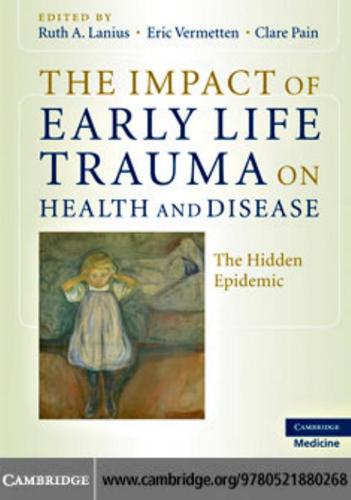
The Impact of Early Life Trauma on Health and Disease
by
Lanius, Ruth A.; Vermetten, Eric; Pain, Clare
Published 11 Jan 2011
The 1980s to early 1990s saw both increased reporting and increased interest in child sexual abuse (e.g., Berliner & Elliott [55]). The renewed interest in a professional sexual abuse literature has so far survived attempts to undermine it. These include challenges put forward by such organizations as the False Memory Syndrome Foundation. As society in the 1980s began to grapple with the real extent of child abuse, and child sexual abuse in particular, it was perhaps inevitable that society’s resistance became more organized. In the early to mid 1990s, societal counter-transference responses to childhood trauma began to encompass two extremes:€those who denied it, minimized it, or who as perpetrators had vested interests in discrediting its investigation; and those who so strongly identified with abuse victims that they progressively lost objectivity.
…
Pedophile groups immediately picked up the study for dissemination, praising the APA for “having the courage” to publish a study showing that “the current war on boy-lovers has no basis in science.” Attorneys began attempting to use the study to support pedophile clients, arguing that the behaviors of their clients were not harmful (e.g., Harker [28]), and the study’s conclusions began to appear in amicus briefs written by the False Memory Syndrome Foundation. On July 30, 1999, the Rind meta-analysis became the first scientific study to be formally denounced by the US Congress. The APA took a stance ultimately satisfactory to no one. Ray Fowler, then President of APA, wrote a letter to Congress [29] that the RindÂ� et al. review “included opinions of the authors that are inconsistent with APA’s stated and deeply held positions” (p. 1), and announced a procedure whereby APA would expect journals to “consider the social policy implications of articles on controversial topics” 27 Section 1: Impact on health and disease 28 (p.€2).
…
In considering these possibilities, it should be noted that 68 chapters reviewing the controversy were written in the period 1996–1999, compared with seven in the 4€years before, and nine in the 4 years after. The acrimony in the initial stages of the debate also reflects reactions by and to the members of the False Memory Syndrome Foundation. This organization, formed in 1992, was developed with the aid of Underwager, Wakefield and the Freyds (a couple accused of sexually abusing their daughter) and became a lightning rod for debate. Individual Foundation Board members took positions that were controversial in the clinical community (e.g., Harold Chapter 3: Recovered and false memories of trauma Lief’s decision to serve on the board with the Freyds after disclosing that he had functioned as their personal psychiatrist [43]).
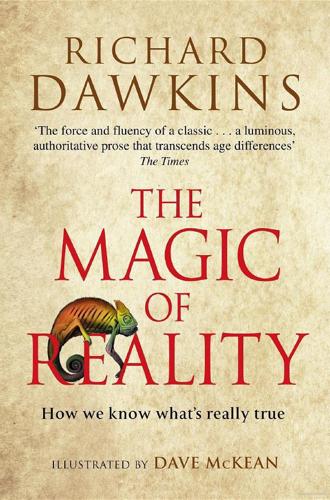
The Magic of Reality: How We Know What's Really True
by
Richard Dawkins
Published 3 Oct 2011
When we think we remember a real incident, we may only be remembering another memory … and so on back to what may or may not have been a real incident originally. Memories of memories of memories can become progressively distorted. There is good evidence that some of our most vivid memories are actually false memories. And false memories can be deliberately planted by unscrupulous ‘therapists’. False memory syndrome helps us understand why at least some of the people who think they have been abducted by aliens claim to have such vivid memories of the incident. What usually happens is that a person becomes obsessed with aliens through reading stories in the newspapers about other alleged abductions. Often, as I said, these people are fans of Star Trek, or other science fiction tales.
…
‘accident prone’, 226 Adam (and Eve), 35–7, 58, 59, 220 agriculture, 46 aliens: abduction by, 182–6; fictional, 181, 193–4; life on other planets, 14–15, 186–93; myths and legends, 180–1, 185–6; vision, 194–8 allergies, 233–4 amphibians, 50 ancestors, 38–43, 46–50, 52–3, 70 Andersen, Hans Christian, 19 Anguilla, 66–7, 68 ant lion, 227–8 apes, 48–9, 60, 72 aphelion, 115–16, 118, 120 Applewhite, Marshall, 181 Arctic tern, 107 Asclepius, 218 asteroids, 136–7 astrology, 219 Atlas, 163 atomic number, 92, 171 atoms: compounds, 79–80; crystals, 80–3, 88; elements, 79; inside the atom, 85–91; knowledge of, 15, 79; mass, 91–2, 93; models, 86–8; nucleus, 87–9, 91–3; radioactive isotopes, 44; splitting, 86 Australian aborigines, 100–2 Aztec religion, 124–6 Babel, Tower of, 56, 61–2 bacteria, 12–13, 65, 96, 140, 230–1, 235 bad things, 216–17, 220–3, 226–7 Barotse tribe, 124 bats, 157, 197 Beagle, HMS, 67 big bang model, 164–5, 177 birds, 50, 57, 107, 140, 197 Blackmore, Sue, 185 Bohr, Niels, 87 Boshongo myth, 162 Brahma, 163 breeding: between different species, 42, 59, 65, 68–9; gene pools, 73–5; horses and donkeys, 42, 59, 65; interbreeding, 47, 49, 71; Mendel’s experiments, 16–17; natural selection, 30–1; selective, 28–9 Brown, Derren, 20 Buckyballs and Buckytubes, 94–5 cancers, 234–5 carbon, 79, 80–1, 88, 92–3, 94–5 carbon-14, 46, 93 cards, shuffling and dealing, 25–6, 251–2 carnivores, 72, 139–40, 142 Cassini space probe, 116 chameleon, 217 chance, 23–6, 220–1, 223–5 chimpanzees, 18, 48, 51, 52–3, 72 Chinese myths, 162–3 chlorine ions, 82 chromosomes, 17, 51 Chumash people, 148–9 Clancy, Susan, 182 Clarke, Arthur C., 256 clocks and watches, 243–4 clouds, 141–2 coaches, 19, 23–4, 26, 31, 238–9, 253 coal, 141–2, 192 Coatlicue, 125–6 coin tossing, 222, 224–6 coincidence, 238, 241–3, 251 colours, 90, 151–8, 169–72, 176 comets, 115–17, 181 Conan Doyle, Sir Arthur, 246–7 conjurors, 20–1, 252 continental drift, 208, 210 continents, 205–9, 210, 212 convection currents, 211–12, 213 Crick, Francis, 17–18 cricket, 224–6 crystals, 80–3, 84, 88, 90 Darwin, Charles: on evolution, 27, 29–30; Galapagos visit, 67–8; on natural selection, 29–30, 74, 227, 229; tree picture, 60–1, 64 dates, 45–6, 93 day–night cycle, 100–2, 106–7 death, 217 Demeter, 102–3 Democritus, 79 Devil, 220, 247 dialects, 62, 64, 71 diamond, 80–1, 82, 88 dinosaurs, 12, 13, 14, 50, 137 disease, 217–20, 231–5 distance, measuring, 166–8 diversity, 57–8 DNA, 16–18, 50–3, 64–5, 67, 70, 73 Dogon tribe, 217 dogs, 18, 59, 156, 217, 233 dolphins, 72, 149, 197 Doppler, Christian, 175–6 Doppler shift, 173, 175–6, 188 dreams, 184, 241–3 Dreamtime, 100 duck-billed platypus, 49, 198 dust mites, 96 Earth: axis, 104–5, 111, 118–20; centre, 85, 212; convection currents, 212, 213; orbit, 103, 108–9, 115, 118–19, 134, 166–7, 191; sea-floor spreading, 210–12; spinning, 103–5; tectonic plates, 209–14, 223 earthquakes: causes, 208, 213–14, 223; diseases, 219; experiences of, 200–1; myths, 202–5 Eden, 36 Egyptian religion, 127 electrons, 87–9, 91–3, 171 elements, 78, 79, 92–3, 133–4, 170–2 ellipses, 113–15, 117 emotions, 18 energy, 138–43 Eta Carinae, 130, 133–4 Europa, 190, 191 evaporation, 141 evolution: auto-immune diseases, 235; Galapagos islands, 67–71; gene pools, 74–5; gradual, 26–7; languages, 57, 63–5, 66, 68, 71; natural selection, 30–1, 68, 70, 75, 227–9; pregnancies, 233; selective breeding, 28–9; tree picture, 61 eyes, 194–7 faces, seeing, 240 fairies, photographs of, 245–6 fairy godmother, 23–4 false memory syndrome, 183, 185 Fatima, miracle of, 247–9 Feynman, Richard, 243 fish, 40–1, 43, 48, 50, 66, 198 fossils, 13, 43–5, 60, 93 Franklin, Rosalind, 18 frogs, 23, 26, 27–31, 50, 52, 66 fungi, 140, 230 Galapagos islands, 67–71 galaxies, 13, 14, 165–8, 172–3, 176–7 gas giants, 190 gases, 79, 83, 85, 89 gene: flow, 64, 66, 73; pool, 73–5 genes, 16–17, 29–30, 51–3, 68, 71, 73–5 genus, 59–60 ghost stories, 240–1 Gilgamesh, 146–8, 149 Gliese 581, 191–2 gold, 79, 81, 82, 192 Goldilocks zone, 191–3 Gondwana, 206 gravity, 109, 111–12, 115–16, 129–32, 141, 192 Greek: medicine, 218–19; myths, 102, 127, 163 Griffiths, Frances, 245–6 Grimm, the Brothers, 19 Hades, 102–3 Haiti, earthquake, 200, 214 Hale–Bopp comet, 181 Halley’s Comet, 117 hallucinations, 184, 249, 250–1 health, 219 Heaven’s Gate cult, 181 Hebrew myths, see Jewish myths Helios, 116, 127, 131 helium, 131, 132, 133 herbivores, 139–40, 142 heredity, 16 hibernation, 108 Himalayas, formation, 207, 213 Hippocrates, 218–19 Homo erectus, 42–3, 60 Homo sapiens, 42–3, 59–60 Hopi people, 57 Hubble, Edwin, 173 Hubble shift, 173 Hubble telescope, 14, 173 Huitzilopochtli, 125–6 Hume, David, 244–5, 246, 248, 250–2 humours, four, 219 hunter-gatherers, 46–7 hydrogen: atom, 92; element, 79; octane, 94; stars, 129, 131–2, 133 iguanas, 66–70 immune system, 231–5 Inca religion, 124, 126 incubus, 185–6 Indian myths, 163 insects, 57, 69, 157, 195 ions, 82 iron, 79, 81, 82, 85, 88, 133–4, 192 islands, 65–71 isotopes, 44–5, 93 Jackson, Michael, 240, 241 Japan: earthquake and tsunami, 200–1; earthquake myths, 204 Jericho, walls of, 202–3 Jesus, 239, 252, 253–4 Jewish myths: Adam and Eve, 35–6, 58, 220; creation, 58, 127; naming the animals, 59; Noah’s Ark, 147–8; Sodom and Gomorrah, 202; Tower of Babel, 56 Jupiter, 129, 135, 136, 188, 190 Kepler, Johannes, 113, 134 lakes, 66, 69, 71 languages, 56–7, 61–5, 66, 71, 74 ‘Law of Averages’, 224–5 lead, 79, 81, 86, 88, 92, 134 lead-206, 45 Lear, Edward, 78 leaves, 138–9, 141, 143 lemurs, 49, 60 light: beams, 90; spectrum, 151–3, 154–9, 168–73; speed of, 14; wavelength, 156–8, 169, 171, 196–7; waves, 176 liquids, 83–4, 89 Lourdes, 218 Lowell, Percival, 191 luck, 223–6 lunar cycles, 121 magic: poetic, 19, 21; stage, 19, 20; supernatural, 19, 20, 25, 238 Magic Circle, 20 mammals, 49–50, 51–3, 60, 72, 107–8, 233 Maori myths, 204 Mars, 129, 136, 190 mass, 91–2 Maya religion, 124, 126 Mayr, Ernst, 57 memories, false, 183, 185 Mendel, Gregor, 16–17, 18 mercury, 79, 85 metals, 79 meteors, 136–7 methane, 85 Mexican Wave, 174 mice, 51, 52, 71 microscopes, 18, 86, 95, 96, 230 migration, 107–8 Milky Way, 14, 35, 148–9, 165–6, 172 miracles: definition, 244; examples, 244–5, 251–5; Fatima, 247–9; Jesus’s, 239, 252–4; playing cards, 25, 251–2; photographs of fairies, 245–6; rumours and traditions, 239–41; supernatural magic, 19, 238; technology and, 255–7; witch trials, 247 mirrors, 90 models, 15–18, 22, 86–8, 164, 177 molecules: atoms in, 80; Buckyballs and Buckytubes, 94–5; colours, 171; diamond crystal, 80, 88; fossils, 44; immune system, 233; miracles, 253; movement, 83–4; waves, 173–4 molybdenum, 79 monkeys, 48–9, 52, 60 moon, 121, 124, 128, 189, 192–3 multiverse, 165 myoglobin, 95 naphthalene, 94 natural selection, 30–1, 68, 70, 75, 193, 227–9 Navajo people, 57 neutron star, 193 neutrons, 91–3 New Guinea, 57, 205 New Zealand: earthquake myths, 204; earthquakes, 201 Newton, Sir Isaac, 109, 151–3, 154, 168–9 newts, 28–30, 31, 50 Nigerian myths, 124, 163 Noah’s Ark, 147–8 Norse myths, 37, 127, 149 North American myths, 57, 102 nucleus, nuclei, 87–9, 91–2, 171, 193 oases, 58, 66, 69, 71 octane, 94 orbits: comets, 115–16, 117; Earth’s orbit, 103, 108–9, 115, 118–19, 134, 166–7, 188, 191; ellipses, 113–14, 117; planets, 109–11, 117, 129, 130–1, 134–5, 187–9; satellites, 111; space station in, 106, 111–12 original sin, 36–7 ozone, 80 Pan Gu myths, 162–3 parallax method, 166–8 paranoia, 229–30 parasites, 140, 228, 230–2, 234 peat, 140–1 Penn and Teller, 20 perihelion, 116, 117, 118, 120 Persephone, 102–3 photons, 90, 121 pilgrimage, 218 Pink Panther, The, 226 planets: detecting, 187–9; distance from star, 191; extra-solar, 187, 189–90, 191; gravitational pull, 129, 192–3; life on other planets, 186–7, 193–8; mass, 192; orbits, 109–11, 117, 129, 130–1, 134–5, 187–9; size, 129, 192; temperature, 85, 191 plate tectonics, 205, 208–11, 223 Pluto, 115, 117, 118, 135 Pollyanna’s Law, 222, 229 Pompeii and Herculaneum, 214 potential energy, 142 predators, 228–9, 230 pregnancy, 232–3 Presley, Elvis, 239, 241 prisms, 151–3, 154, 168–9 protons, 91–3, 171 Proxima Centauri, 14, 128, 130 Pueblo people, 57 pyramids, 126–7 quarks, 93 Quetzalcoatl, 125 radar, 197–8 radio telescope, 13, 15, 158 radio waves, 13, 158, 196–7; modulated, 197 radioactive clocks, 45–6 rainbow: myths, 147–9; real magic, 150–1; spectrum, 152–3, 154–6, 156–9, 168 raindrops, 153–6 Randi, James ‘The Amazing’, 20 red: dwarf, 191; giant, 132; shift, 173, 176, 188 relative movement, 103–5 reptiles, 50 rivers, 141 rocks: age of, 44–5; hardness, 88–9; igneous, 43–4; opacity, 90; pointy, 223; sedimentary, 43–4, 82; types, 43–4 Rowling, J.
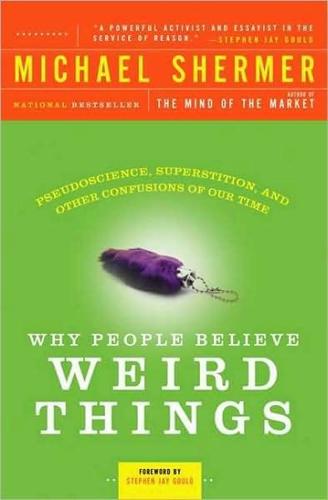
Why People Believe Weird Things: Pseudoscience, Superstition, and Other Confusions of Our Time
by
Michael Shermer
Published 1 Jan 1997
These women have become known as "retractors," and there is now even a therapist retractor (Pendergrast 1996). Lawyers are helping to reverse the feedback loop by holding therapists accountable through the legal system. The positive feedback loop is now becoming a negative one, and thanks to people like Pasley and organizations like the False Memory Syndrome Foundation, the direction of information exchange is reversing. The reversal of the feedback loop was given another boost in October 1995, when a six-member jury in Ramsey County, Minnesota, awarded $2.7 million to Vynnette Hamanne and her husband after a six-week trial about charges that Hamanne's St.
…
The first problem is that if memory is a product of neuronal connections and our flawed and ever-changing reconstruction of these neuronal connections, how will Omega/God reconstruct something that does not really exist? There is a vast difference between every memory that could be reconstructed and an individual's actual set of memory patterns, the vast majority of which are lost to time. The controversy over false memory syndrome is a case in point. We have very little understanding of how memory works, much less how to reconstruct it. Memories cannot be reconstructed in the sense of playing back a videotape. The event occurs. A selective impression of the event is made on the brain through the senses. Then the individual rehearses the memory and in the process changes it a bit, depending on emotions, previous memories, subsequent events and memories, and so on.
…
Journal of Personality and Social Psychology 7:282-290. Hobbes, T [1651] 1968. Leviathan. Ed. C. B. Macpherson. New York: Penguin. ......... 1839-1845. The English Works of Thomas Hobbes of Malmesbury. Ed. W. Molesworth. 11 vols. London: J. Bohn. Hochman, J. 1993. Recovered Memory Therapy and False Memory Syndrome. Skeptic 2, no. 3:58-61. Hook, S. 1943. The Hero in History: A Study in Limitation and Possibility. New York: John Day. Horner, J. R., and J. Gorman. 1988. Digging Dinosaurs. New York: Workman. House, W. R. 1989. Tales of the Holohoax. Champaign, 111.: John McLaughlin/Wiswell Ruffin House.
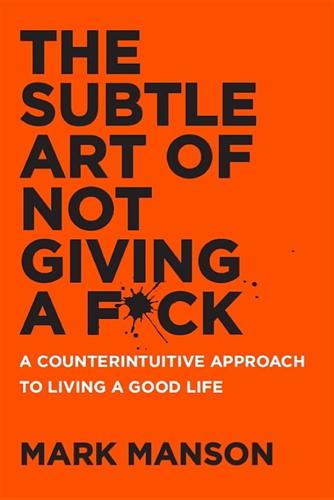
The Subtle Art of Not Giving a F*ck: A Counterintuitive Approach to Living a Good Life
by
Mark Manson
Published 12 Sep 2016
For people who were dissatisfied with their lives, these suggestive explanations, combined with the sensationalizing media—there were veritable epidemics of sexual abuse and satanic violence going on, and you could be a victim too—gave people’s unconscious minds the incentive to fudge their memories a bit and explain their current suffering in a way that allowed them to be victims and avoid responsibility. Repressed memory therapy then acted as a means to pull these unconscious desires out and put them into a seemingly tangible form of a memory. This process, and the state of mind it resulted in, became so common that a name was introduced for it: false memory syndrome. It changed the way courtrooms operate. Thousands of therapists were sued and lost their licenses. Repressed memory therapy fell out of practice and was replaced by more practical methods. Recent research has only reinforced the painful lesson of that era: our beliefs are malleable, and our memories are horribly unreliable.

Power
by
Shahida Arabi
Published 11 Jan 2017
Retrieved from https://www.psychologytoday.com/blog/the-athletes-way/201211/the-neurochemicals-happiness Bremner, J. D., Krystal, J. H., Charney, D.S., & Southwick, S. M. (1996). Neural mechanisms in dissociative amnesia for childhood abuse: Relevance to the current controversy surrounding the “false memory syndrome.” American Journal of Psychiatry, 153 (7), 71-82. Bremner JD (2006). Traumatic stress: effects on the brain. Dialogues in clinical neuroscience, 8 (4), 445-61. Burke, T., Ph.D. (2008). How trauma impacts the brain. Speech presented in Rachel’s Vineyard Ministries. Retrieved from http://www.rachelsvineyard.org/Downloads/Canada%20Conference%2008/TextOfBrainPP.pdf Braiker, H.

Mistakes Were Made (But Not by Me): Why We Justify Foolish Beliefs, Bad Decisions, and Hurtful Acts
by
Carol Tavris
and
Elliot Aronson
Published 6 May 2007
CHAPTER 4 Good Intentions, Bad Science: The Closed Loop of Clinical Judgment 1 The story of Grace was told to us by psychologist Joseph de Rivera, who interviewed her and others in his research on the psychology of recanters. See, for example, Joseph de Rivera (1997), "The Construction of False Memory Syndrome: The Experience of Retractors," Psychological Inquiry, 8, pp. 271–292; and de Rivera (2000), "Understanding Persons Who Repudiate Memories Recovered in Therapy," Professional Psychology: Research and Practice, 31, pp. 378–386. 2 The most comprehensive history of the recovered-memory epidemic remains Mark Pendergrast's 1996 Victims of Memory (second ed.).

Bricks & Mortals: Ten Great Buildings and the People They Made
by
Tom Wilkinson
Published 21 Jul 2014
Whether it is ‘authentically Malian’ is a matter of heated debate: even at the time one French observer who had been familiar with the ruins of the original mosque called its replacement ‘a cross between a hedgehog and a church organ’, and said its conical towers made the building resemble ‘a baroque temple dedicated to the god of suppositories’.17 Critics continue to argue that its symmetrical monumentality is a European imposition, and indeed the three towers of the façade, the conical turrets of which are topped with ostrich eggs, do make it look rather like a Gothic cathedral. Could this be an example of the kind of monumental false-memory syndrome – specifically French again – that Ruskin had criticised in 1849, when he argued against Viollet-le-Duc’s overenthusiastic restorations? In any case, whether it is French-colonial or Malian, the Aga Khan Trust determined that the 1907 construction was the ‘authentic’ mosque, and proceeded to strip back the layers of accreted mud that had been added to the building over the last hundred years.
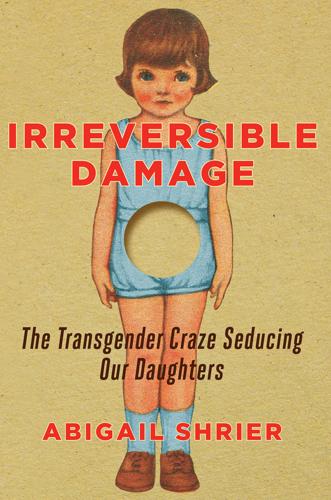
Irreversible Damage: The Transgender Craze Seducing Our Daughters
by
Abigail Shrier
Published 28 Jun 2020
Julie Beck, “ ‘Americanitis’: The Disease of Living Too Fast,” The Atlantic, March 11, 2016, https://www.theatlantic.com/health/archive/2016/03/the-history-of-neurasthenia-or-americanitis-health-happiness-and-culture/473253/ . 2 . Ethan Watters, Crazy Like Us: The Globalization of the American Psyche (New York, NY: Simon & Schuster, 2010), 34. 3 . Paul M. McHugh, Try to Remember: Psychiatry’s Clash over Meaning, Memory, and Mind (New York, NY: Dana Press, 2008), 69 (noting that those with “false memory syndrome” were usually women). 4 . Mandy Van Deven, “How We Became a Nation of Cutters,” Salon, August 19, 2011, https://www.salon.com/2011/08/19/tender_cut_interview/ . 5 . Robert Bartholomew, “Why Are Females Prone to Mass Hysteria?” Psychology Today, March 31, 2017, https://www.psychologytoday.com/us/blog/its-catching/201703/why-are-females-prone-mass-hysteria . 6 .
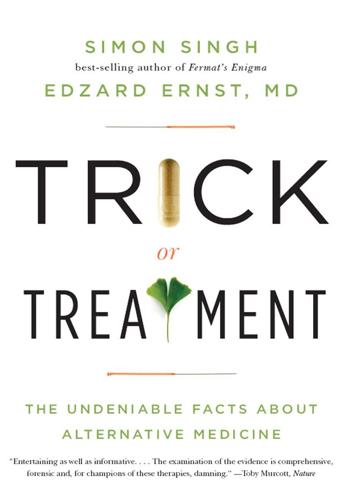
Trick or Treatment: The Undeniable Facts About Alternative Medicine
by
Edzard Ernst
and
Simon Singh
Published 17 Aug 2008
There is much less research for autogenic training, but the existing evidence is encouraging for anxiety, stress, hypertension, insomnia and some pain syndromes. Hypnotherapy and autogenic training are relatively safe, but they should not be used by people with psychoses or other severe mental problems. With hypnotherapy, the recovery of repressed or false memories can create problems, and cases of false-memory syndrome (i.e. remembering distressing events which, in reality, have never occurred) have been reported. Conclusion The prudent use of hypnotherapy can be helpful for some patients. Whether this is a specific effect of the treatment or a non-specific (placebo) effect is difficult to say. Autogenic training has the added advantage of being an economical self-help approach that maximizes each patient’s own involvement.
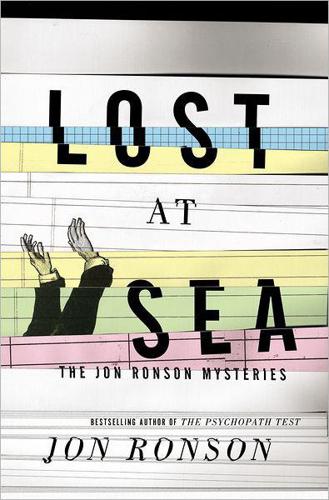
Lost at Sea
by
Jon Ronson
Published 1 Oct 2012
“No wonder I wasted eighteen hundred hours of police time.” Mid-afternoon, and Ray’s friend Keith offers us the use of his house so we can talk quietly, away from the noisy pub. Things are turning quite chaotic. The man who was eloquent and funny on the train is getting drunker and more hostile. “Have you read up about false memory syndrome?” I ask at one point. “Go on. Go on. Go on,” Ray snaps. “What’s your degree in? Psychiatry? Are you a proper psychiatrist?” And then, a few moments later, “Are you coming to me with clean hands, Jon? Have you ever been sued?” I shake my head. “You bloody white clean Daz clean brilliant white man,” Ray says.
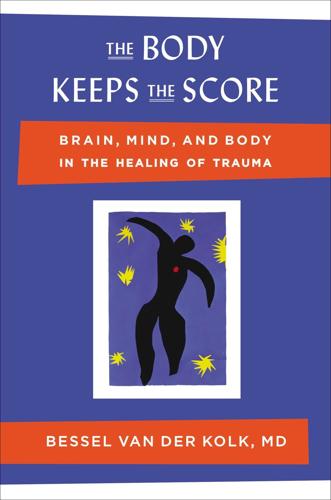
The Body Keeps the Score: Brain, Mind, and Body in the Healing of Trauma
by
Bessel van Der Kolk M. D.
Published 7 Sep 2015
Cautioned by history, I began to wonder if we were headed toward another backlash like those of 1895, 1917, and 1947 against acknowledging the reality of trauma. That proved to be the case, for by the early 1990s articles had started to appear in many leading newspapers and magazines in United States and in Europe about a so-called False Memory Syndrome in which psychiatric patients supposedly manufactured elaborate false memories of sexual abuse, which they then claimed had lain dormant for many years before being recovered. What was striking about these articles was the certainty with which they stated that there was no evidence that people remember trauma any differently than they do ordinary events.
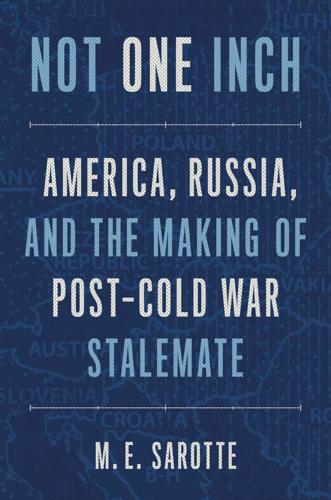
Not One Inch: America, Russia, and the Making of Post-Cold War Stalemate
by
M. E. Sarotte
Published 29 Nov 2021
Philip Zelikow and Condoleezza Rice echo Goldgeier and Kramer, writing in 2019 that in February 1990 “the notion of Poland or Hungary or any member of the still-extant alliance joining NATO was not yet on the table”; Zelikow and Rice, To Build, 233. Similar statements—“the Russians never raised the question of Nato enlargement”—appear in Christopher Clark and Kristina Spohr, “Moscow’s Account of Nato Expansion is a Case of False Memory Syndrome,” The Guardian, May 24, 2015, https://www.theguardian.com/commentisfree/2015/may/24/russia-nato-expansion-memory-grievances; and Spohr, “Precluded or Precedent-Setting?,” 18, 39, 52–53, which states that the “issue of NATO enlargement never came up as a separate topic.” The evidence presented in this book renders these views untenable.